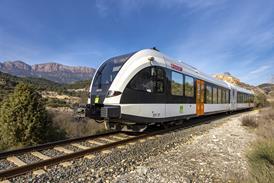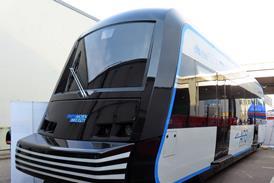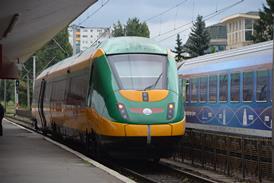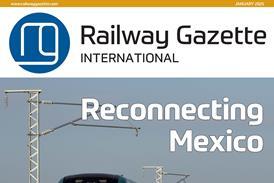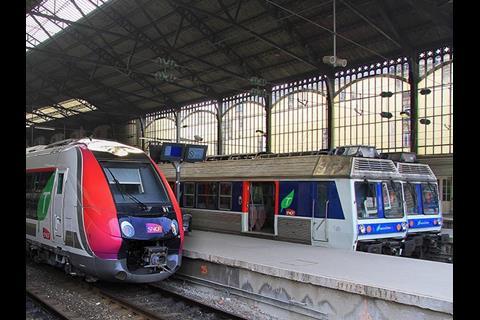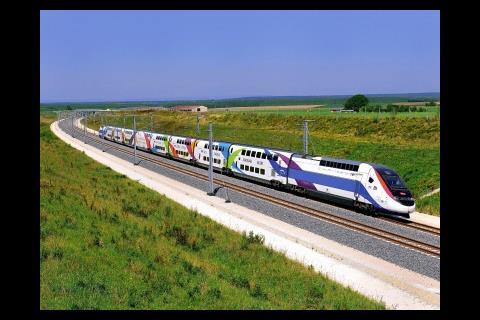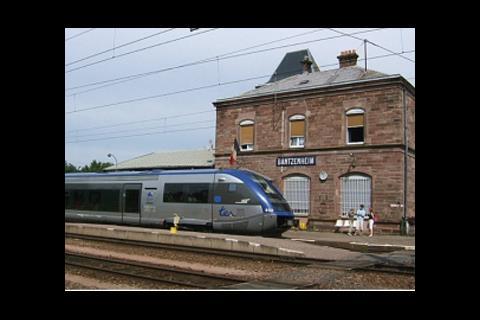FRANCE: Enhancing capacity at key rail hubs is one of several priority measures outlined by the Conseil d’Orientation des Infrastructures on February 1.
The council was established in September 2017 by Transport Secretary Elisabeth Borne, and its work builds on the conclusions of the Mobilité 21 commission issued in 2014. Its 220 page report is intended to advise the government on infrastructure priorities in the context of two strategic goals: to decarbonise the French transport sector by a factor of four, and to manage the cost of investment in the context of an already large public sector debt burden.
Report author Philippe Duron, a former Mayor of Caen, noted that President Emmanuel Macron had stated during the celebrations marking the opening of high speed lines to Bordeaux and Rennes in July last year that future infrastructure spending should focus on ‘the needs of every day travellers’. In this context, Duron said ‘not everything is affordable’ and some of the major projects advocated at a regional level would have to be be deferred or significantly delayed.
The report sets out three scenarios covering different levels of spending for government to consider. Over a period of 20 years, these would see between €48bn and €80bn allocated to infrastructure funding authority AFITF for projects across all surface transport modes. Spending on standalone programmes like the Grand Paris metro network and the international section of the Lyon – Torino base tunnel was not within the scope of the report.
Duron also explained that the impact of the ongoing Spinetta Review into the economic model of the national rail network was considered to be neutral in terms of future infrastructure investment, as were the implications of other policy factors such as rail market liberalisation.
The council suggested that in all three spending scenarios, injecting more capacity at key rail hubs would be a priority. The report urged more rapid introduction of ETCS and related digital systems, including traffic management and condition-based maintenance and monitoring tools.
Capacity enhancements in major cities including Paris, Lyon, Bordeaux and Toulouse were seen as a prerequisite before the widespread construction of more new lines is undertaken. The council said it ‘broadly shared’ many of the Mobilités 21 commission’s conclusions about the viability of new lines. Alongside capacity enhancements around Marseille and Nice, a new line between the two cities should be taken forward as a priority; this would include construction of a low-level station in Marseille to reduce the number of trains reversing at Marseille St-Charles.
The report reached no firm consensus on the proposed extension towards Perpignan of the Nîmes – Montpellier bypass. As an initial step, it recommended ‘rapid study’ of the benefits of implementing ETCS Level 2 on the most congested section of the existing main line, which is between Montpellier and Béziers.
Elsewhere, the proposed Bordeaux – Toulouse high speed line is broadly supported. This forms one axis of the Grand Projet Ferroviaire du Sud-Ouest programme. The report backed a phased approach to construction so that capacity around Bordeaux and Toulouse could be released for 15 min interval suburban trains to operate on existing lines. However, the council was reticent about the prospects for the other branch of GPSO, linking Bordeaux with Dax. ‘This should only be considered in the very long term once the existing railway reaches saturation point’, the report said.
Also deferred ‘until at least 2038’ are future phases of LGV Rhin-Rhône, serving Strasbourg and Dijon, a recommendation which was immediately criticised by politicians in Alsace.
Advances in alternative traction technology, notably Alstom’s work in hydrogen-fuelled trains, led the council to recommend the cancellation of four electrification schemes on secondary routes.
Major rail investment schemes covered by the Duron report
- Paris Est-Ouest Liaison Express
- Massy – Valenton LGV Interconnexion Sud upgrading
- Orly-Pont de Rungis TGV station
- Paris-Lyon and Paris-Bercy station remodelling
- Roissy - Picardie link
- Nœud Ferroviaire Lyonnais
- Contournement Ferroviaire de L’Agglomération Lyonnaise
- Dijon – Modane route modernisation
- Grand Project Ferroviaire du Sud Ouest
- Electrification (Paris – Troyes phase 2, Angoulême – Royan, Auxerre – Laroche, Amiens – Rang du Fliers)
- Paris – Orléans – Limoges - Toulouse upgrading
- Montpellier – Perpignan new line
- Marseille – Nice new line
- Paris St-Lazare remodelling
- Nantes – Bordeaux upgrading


